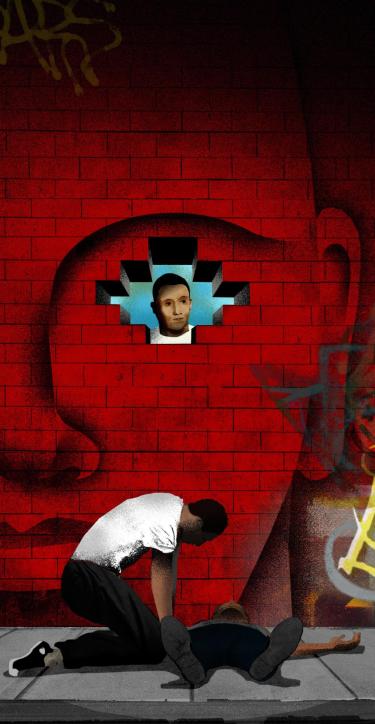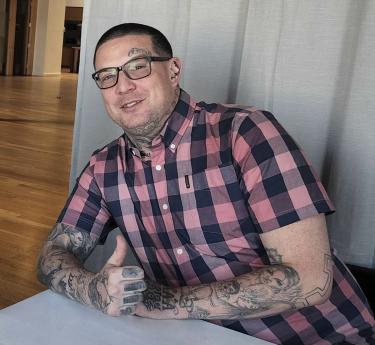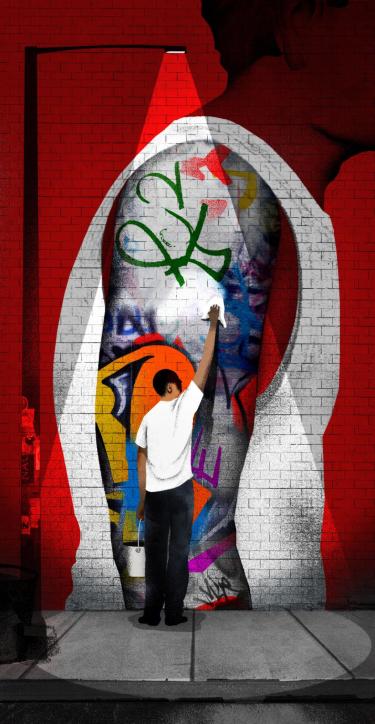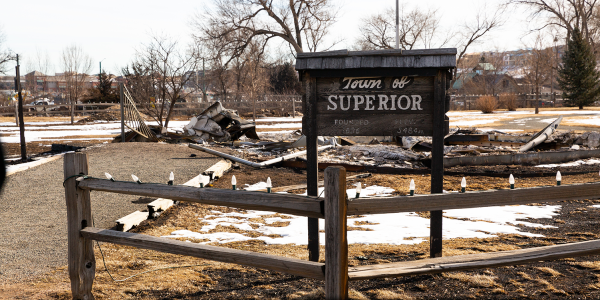 Gangs have always been part of Kelly Mahana’s life.
Gangs have always been part of Kelly Mahana’s life.
At age 5, he witnessed his father’s murder. At 10, he committed his first felony.
As a teenager running wild on the streets of Denver, he and his friends robbed homes and businesses and idolized gangster uncles and cousins who had spent time in prison.
They were all “broken,” Mahana recalled, and gangs provided stability in their unstable lives.
“When I looked at my future, I figured I was either gonna die going hard for the hood or I was gonna get status going to prison. Those are the dreams of a young gang member.”
At age 31, after spending half his life locked up, losing countless friends and suffering three near-fatal overdoses, Mahana had grown tired of the consequences of that dream and began to build a new one.
Thanks in part to an empathetic case manager, addiction counseling and an outreach worker who helped him remove his gang tattoos and get a job, he now has a wife and a thriving business, Authentic Recovery Homes, helping others live sober, productive lives.
“I’m still from my hood, and I still love my neighborhood, but I’ve learned that I love myself, my family and my goals more,” he said. “I don’t want to be a bad guy anymore.”
Mahana, 35, is among the dozens of current and former gang members interviewed for a sweeping multi-year study exploring a question that is top of mind nationwide: Can community interventions prevent gang members from committing violence?
The answer CU researchers found is yes — but with some surprising caveats.
An Unraveling Peace
The findings come amid a concerning surge in homicide rates nationwide and a rash of high-profile gang-related shootings in Colorado. U.S. homicide rates spiked 30% year-over-year in 2020, in part due to rising gang violence. In 2021 Denver logged the highest number of murders since 1981, and this March, a Denver grand jury indicted 13 young gang members for homicides, shootings and car thefts impacting 113 victims.
“College kids today have grown up in one of the safest periods since we’ve been recording violence in the United States,” said sociology professor David Pyrooz, referring to a sharp decrease in violent crime between the 1990s and the turn of the century. “But in recent years that has started to unravel.”
He noted that, historically, gangs have accounted for about 13% of all homicides even though they represent only about 0.5% of the population.
While policing may curb the violence short-term, he argues, it has not proved an effective strategy in the long-run.
“The idea that you are going to solve this problem with law enforcement or incarceration is a fool’s errand,” he said. “We’ve been doing it for 40 years and it has barely put a dent in gang activity.”
In the wake of the 2020 killing of George Floyd and subsequent protests calling for means other than policing to make streets safer, Congress passed the Bipartisan Safer Communities Act of 2022, appropriating $250 million to community violence intervention and prevention programs.
“It’s not like these programs are new. They’ve been around for decades. But they have always been scraping by for funds,” said Pyrooz. “Now we are seeing a whole new way of thinking, coming from the highest levels, about how we can inoculate communities against violence.”
But do such programs work?
In 2016, Pyrooz and his students set out to find out.
 Learning About Gangs from Gang Members
Learning About Gangs from Gang Members
The study centered on the Gang Violence Reduction Initiative (GRID), a program launched in Denver in 2009 after Darrent Williams, a cornerback for the Denver Broncos, was fatally gunned down in an alleged gang-related conflict in a downtown nightclub. The shooting drew attention to a gang violence problem that had been brewing since the late 1980s.
Until GRID, Pyrooz noted, most efforts relied on policing and incarceration with little success.
GRID has already served 500 people and encourages participants to desist from crime and disengage from gangs.
It uses multidisciplinary teams from various government agencies, along with an army of street outreach workers, to help high-risk gang members learn life skills and get jobs, drug and alcohol counseling, family therapy, education, housing assistance and mental health support.
“For a long time, a lot of the argument has been, if you can get people out of gangs, you can get them to reduce their criminal activity,” said Pyrooz.
To assess whether GRID achieved these goals, the research team enrolled 143 gang members, 72 of whom participated in GRID, for a first-of-its-kind randomized controlled trial.
Pyrooz and two PhD candidates, with the help of a few dozen undergraduate criminology students, spent years — as a global pandemic raged — knocking on doors, traveling to prisons and juvenile detention centers, and visiting halfway houses to, first, convince individuals to take part in the study and, then, to conduct baseline surveys and hour-long follow-up interviews after 10 months.
“Never once did anyone make me feel afraid for my safety,” said co-author Elizabeth Weltman (MSoc’20, PhD’24), a PhD candidate in the sociology department who drove as far as three hours each way for some of her jail interviews. “Some of them just seemed really happy that someone was willing to listen to them, and a lot of them seemed like they genuinely wanted to turn their lives around.”
Jose Antonio Sanchez (PhDSoc’24), another sociology PhD student, sat in on team meetings where partners with different agencies would devise an individualized plan for each participant, many of them re-entering their communities after years of incarceration.
“These are some of the most vulnerable members of our communities,” said Sanchez, recalling a client who had been shot multiple times and had lost his eyesight.
Sanchez also tagged along with street outreach workers, some of them former gang members themselves, who checked in with participants to help them carry out their plans.
“Being able to actually get out and talk to the people and peek under the hood and see how the program is really working is what distinguishes this work from other work that has come before it,” said Pyrooz.
 Success, with Caveats
Success, with Caveats
The findings, which they hope to publish in a peer reviewed journal this fall, are both hopeful and surprising.
GRID participants were 70% less likely to perpetrate violence during the study period than the control group, which did not participate in GRID. This finding is promising, and could have nationwide policy implications, the authors said.
But surprisingly, GRID participants were also three times more likely to identify as gang members at the end of the study period than those who did not participate. More research is needed to unpack why that is.
But research participants suggest a possible reason behind the unexpected finding: Gangs are about much more than violence.
“How can I tell these kids to not identify with where they’re from? That’s their neighborhood, it’s part of who they are,” expressed one street outreach worker quoted in the study.
Added another: “I’m not there to tell them not to be a gang member. I’m there to tell them to not be a stupid gang member.”
Such sentiments resonate with Mahana.
He first connected with GRID in late 2019, after being released from a lengthy prison stay for kidnapping. He met a street outreach worker at a halfway house and the two quickly bonded.
“He showed up for me,” said Mahana, who is no longer active in the gang and runs two sober-living homes.
When asked if he has left the gang, he says it’s complicated.
“The gang isn’t just a gang — it’s our culture, our ethnicity, our family. It’s what our parents and grandparents and uncles and cousins have always done,” he said. “When you leave the gang, you’re leaving everything you’ve ever been taught.”
A New Approach to Curbing Gang Violence?
Pyrooz said it’s too early to assert that anti-violence programs nationwide should de-emphasize gang disengagement. But his research suggests that program participants don’t always need to sever ties to gangs to turn their lives around.
“What really matters in the end is the criminal behavior, because that is why everyone cares so much about gangs,” Pyrooz said. “If gang members didn’t commit crime and get victimized by violence, they would just be a group of friends hanging out.”





